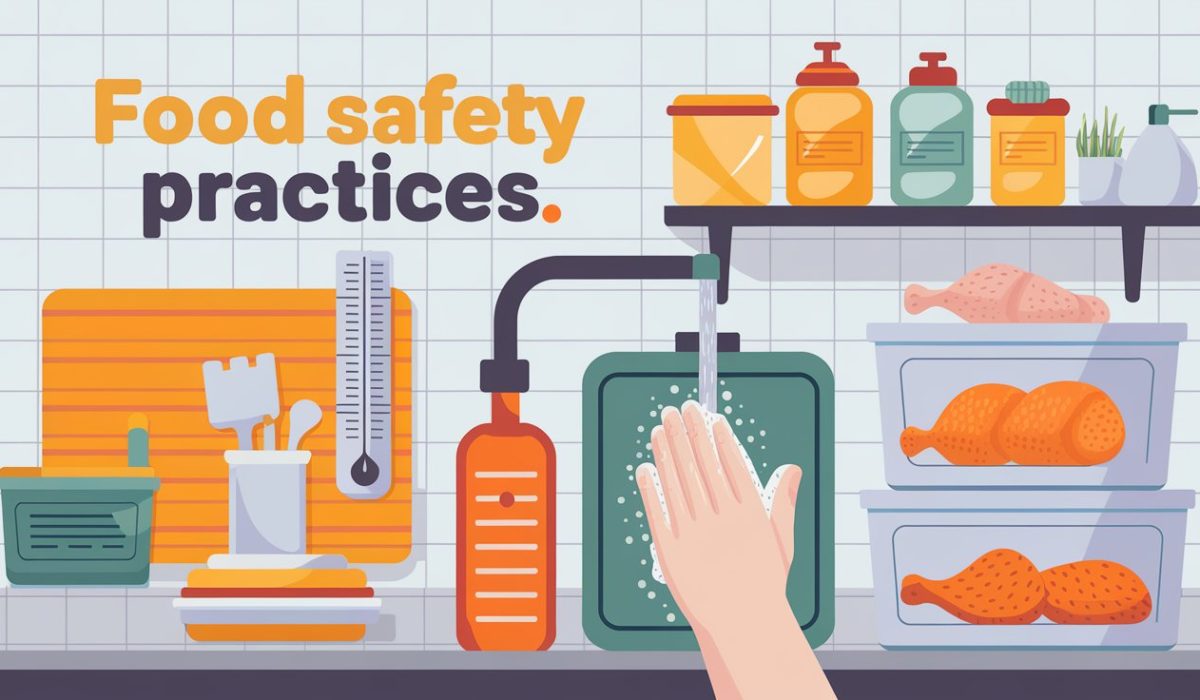Food Safety Practices: Essential Tips for a Healthy Kitchen
Ensuring food safety is crucial for preventing foodborne illnesses and maintaining a healthy lifestyle. Whether you’re cooking at home or working in a professional kitchen, understanding and implementing food safety practices can make a significant difference. In this post, we’ll explore essential tips to help you keep your food safe and your kitchen healthy.
1. Wash Your Hands
Before handling food, always wash your hands thoroughly with soap and water for at least 20 seconds. This simple step can significantly reduce the risk of transferring harmful bacteria and viruses to your food. Remember to wash your hands after using the restroom, handling raw meat, or touching any surface that may be contaminated.
2. Keep Your Kitchen Clean
A clean kitchen is essential for food safety. Regularly clean countertops, cutting boards, and utensils with hot, soapy water. Sanitize surfaces after preparing raw meat or poultry to prevent cross-contamination. Additionally, keep sponges and dishcloths clean, as they can harbor bacteria.
3. Separate Raw and Cooked Foods
To avoid cross-contamination, always keep raw foods separate from cooked and ready-to-eat foods. Use separate cutting boards and utensils for raw meat, poultry, seafood, and vegetables. This practice is essential in preventing harmful bacteria from spreading to other foods.
4. Cook Food to the Right Temperature
Cooking food to the appropriate temperature is crucial for killing harmful bacteria. Use a food thermometer to ensure that meats, poultry, and casseroles reach the recommended internal temperatures. For example:
- Poultry: 165°F (75°C)
- Ground meats: 160°F (70°C)
- Beef, pork, and lamb (steaks, roasts, chops): 145°F (63°C) with a 3-minute rest time
5. Store Food Properly
Proper food storage is vital for maintaining food safety. Refrigerate perishable items promptly, and keep your refrigerator temperature at or below 40°F (4°C). Use airtight containers to store leftovers and label them with dates to ensure they are consumed within a safe timeframe.
6. Understand Food Expiration Dates
Pay attention to food expiration dates and use them as a guide for freshness. “Best by” dates indicate quality rather than safety, while “use by” dates indicate the last date for safe consumption. Always trust your senses; if a food item looks, smells, or tastes off, it’s better to err on the side of caution and discard it.
7. Thaw Food Safely
Thawing food properly is essential for preventing bacterial growth. Avoid thawing food at room temperature. Instead, use one of these safe methods:
- In the refrigerator
- In cold water (change the water every 30 minutes)
- In the microwave (cook immediately after thawing)
8. Stay Informed About Food Recalls
Stay informed about food recalls by checking reliable sources such as the FDA or your local health department. If a product you purchased is recalled, follow the instructions provided and discard or return the product as necessary.
Conclusion
Implementing food safety practices is vital for maintaining a healthy kitchen and preventing foodborne illnesses. By following these simple tips, you can ensure that your food is safe to eat and enjoyable. Remember, food safety starts with you, so take the necessary steps to protect yourself and your loved ones.
